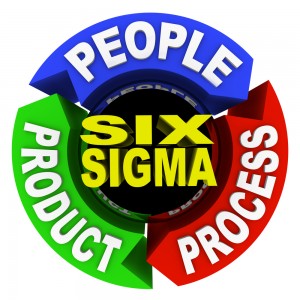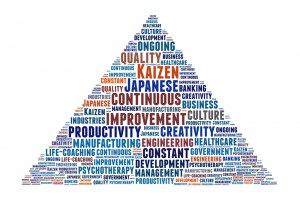For a while Lean Six Sigma continuous improvement philosophies were destined for the manufacturing organisations eager to improve cost of their operations and their product quality. Lean philosophies developed and championed by Toyota (Toyota Production System) have since moved to other industries and work environments. Apart from the car manufacturers, leading organisations around the world have  embraced Lean and Six Sigma working philosophies. Apple, for example, inspired by the Japan visit by Steve Jobs in 1980s have ensured their manufacturing sites were operating under Lean principles. Similarly, one of the largest clothing retailers, Zara, introduced Lean in 1990’s making it the quickest to market fashion businesses in the world. This provided Zara with the competitive advantage and fuelled unprecedented growth since then. Lately, Lean and Six Sigma have also found their way in the health and banking sectors and along in the office environment.
embraced Lean and Six Sigma working philosophies. Apple, for example, inspired by the Japan visit by Steve Jobs in 1980s have ensured their manufacturing sites were operating under Lean principles. Similarly, one of the largest clothing retailers, Zara, introduced Lean in 1990’s making it the quickest to market fashion businesses in the world. This provided Zara with the competitive advantage and fuelled unprecedented growth since then. Lately, Lean and Six Sigma have also found their way in the health and banking sectors and along in the office environment.
What is Lean Six Sigma?
Lean is characterised by the desire to reduce waste by the continuous improvement activity (‘Kaizen’) and level out the demand fluctuation by introducing ‘pull’ systems across the organisation. There are several Lean well known lean tools: 5S (workplace organisation), Kaizen (improvement activities), Just in Time (‘pull’ signal system), 5 Why’s (problem solving process),various visual management tools, etc. Six Sigma is defined by a very structured and often statistical approach to the improvement activities. Lean Six Sigma is often responsible for the significant improvements in product/service quality, as well as the reduction in waste, inventory and costs. The principles of Lean Six Sigma heavily rely on the employee involvement in continuous improvement and the organisations practicing it have higher than average employee engagement.
Lean Six Sigma is often responsible for the significant improvements in product/service quality, as well as the reduction in waste, inventory and costs. The principles of Lean Six Sigma heavily rely on the employee involvement in continuous improvement and the organisations practicing it have higher than average employee engagement.
Office Lean Six Sigma
There are several Lean techniques that apply to the office environment:
- Employees can develop and document standardised approaches to performing repetitive tasks and improve with time. This creates a concept of ‘economies of repetition’ and significantly reduces human error.
- Structured problem solving exercises (based on PDCA or DMAIC) can direct energy into finding better and more error-proof online casino australia operating methods. High level of buy-in can be achieved simply by involving employees in these activities.
- Visual management systems and stand up meetings will engage employees and make performance visual all the time. These systems will also save time by reducing long and ineffective sit-down meetings.
- Introducing ‘pull’ systems for workflow management will even the workload, introduce standard pace of work and will minimise waste resulting in overproducing (e.g. documents) and error-filled work.
- Building-in quality at every step of the office work will save time and produce higher levels of customer satisfaction.
Some examples of office-based Lean Six Sigma implementation can be:
- A visual tracking of customer complaint calls
- A Kaizen (improvement) activity to deal with a trend in customer complaint calls
- Developing a standard process for data entry and recording every step of the process on a screen capture software for future training purposes.
- Introducing a ‘Kanban’ type signal for workflow management. Eg. Systems such as smartQ make it easy to notify next person in upstream that a customer demands some outputs, signalling a commencement of work activity (rather than to pre-make outputs when not required). Etc.

All xSource processes for example are based on Lean Six Sigma principles, resulting in excellent service quality and leading staff development practices.